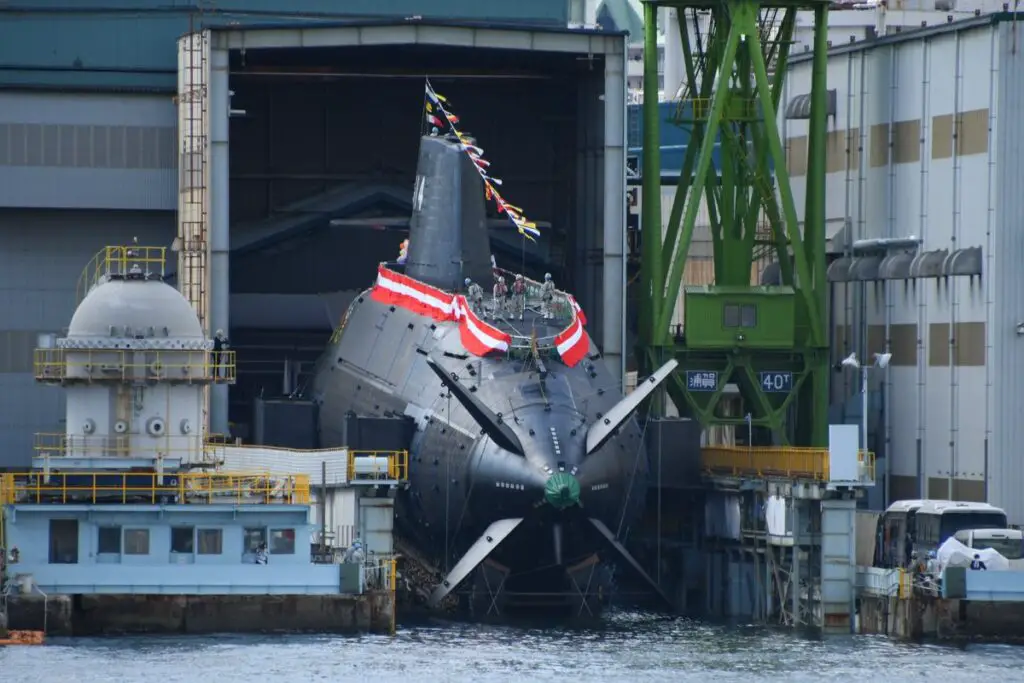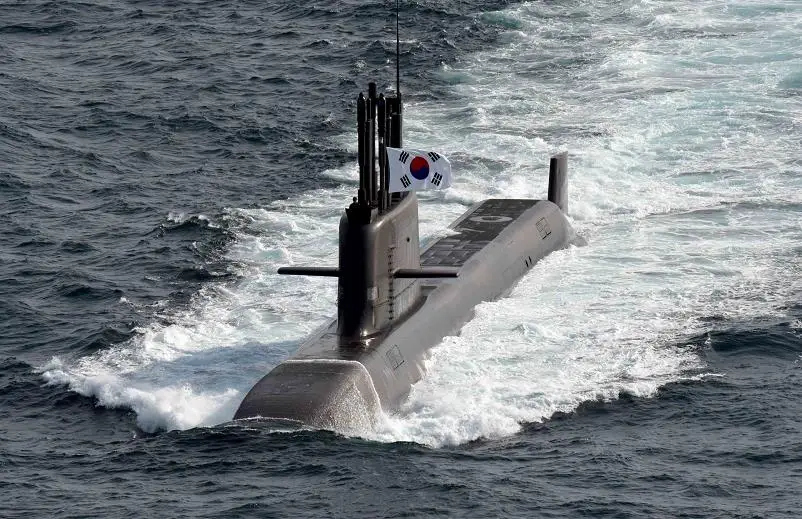Once upon a time, the Russian Kilo Class or Project 636 Varshavyanka class submarines were known as “Black Holes” due to their stealthiness, and India had ten of them. After the failure of the Russian non-nuclear or conventional submarine project 677 Lada and its subsequent projects, such as “Amur,” which lacked an air-independent propulsion system (AIP), the only submarines still in service with the Russian Navy are the older and modernised Varshavyanka class submarines and an unfinished project 677 submarine without an AIP.
The Russian submarine forces in the Baltic Sea, which NATO increasingly dominates, appear severely deficient. There is only one submarine in the Baltic Fleet, B-806 “Dmitrov,” which was built in 1986. According to the Russian Ministry of Defence, an undetermined number of project 0636 will be based here in the near future. The first of the series will be Petrozavodsk.
The situation in the Black Sea is quantitatively better, with seven submarines in total. However, only one of them, the “Paltus,” has been in service for over 20 years, while the rest are Varshavyanka class submarines. It’s better than nothing in the Baltic Sea. However, Romania is ordering two Scorpene Submarines to operate in this region.
Regarding subs, quality matters as much as quantity – an extensive fleet of outdated submarines may seem like a formidable opponent, but cutting-edge technology plays a considerably more significant role.
Diesel-electric subs have advantages over nuclear subs, mainly in coastal areas or relatively shallow water. Diesel-electric submarines are quieter, do not require kilometre-deep depths, and have reduced dimensions. They are ideal for coastal warfare.
There are disadvantages as well. The primary drawback is returning to the surface for battery recharging. This fact cannot be avoided, mainly since snorkelling does not solve the issue. Submarines at periscope depth are readily detectable by aircraft or, more recently, reconnaissance UAVs. In the past century, anti-submarine aircraft and unmanned aerial vehicles have posed a significant threat to submarines.
Consequently, designers are attempting to reduce the frequency with which subs must surface.
Air Independent Propulsion
Since the 1990s, two types of conventional submarine propulsion have been available. One consisted of diesel-electric submarines, while the other consisted of diesel-electric submarines with AIP.
“Gotland,” a Swedish submarine project, was the first to implement the AIP concept, and many others, including the Japanese, subsequently adopted a similar strategy. It combines a diesel engine with a hydrogen-powered Stirling engine.
The Japanese began integrating their Soryu-class with Sterling AIP by acquiring the technology from the Swedes and establishing licenced domestic production. Over ten years, Japanese shipbuilders effectively constructed ten Soryu-class submarines with AIP. After that, however, the path took a different turn.
Sweden, Japan, Singapore, and China are currently using Stirling AIP. It is a cost-effective method of consuming diesel fuel in an oxidiser environment, using oxygen obtained from liquefied air and expelling exhaust into the water to generate the energy required for submarine propulsion and combat readiness.
This is a great solution for submarines operating in shallow oceans where noise reduction is not crucial. This is true for the Baltic Sea, Black Sea, Sea of Japan, and Sulawesi Sea. These regions provide abundant opportunities for submarines to operate effectively.
Therefore, it is unsurprising that Sweden is retrofitting its submarines with additional Stirling engine compartments. For example, conditions in the Malacca Strait are comparable to those in the Baltic Sea.
The Japanese have equipped their submarines with two Stirling engines, making them more remarkable than their Swedish counterparts. Japanese shipbuilders have made significant progress in adapting their submarines to the Pacific Ocean’s operating conditions, which differ substantially from those of the Baltic Sea.
Li-Ion Batteries
However, constructing the eleventh and twelfth submarines, the Japanese deviated from the intended trajectory.
The eleventh submarine, named “Oryu” (meaning “Phoenix Dragon” and commissioned on March 5, 2020), and the twelfth submarine, named “Toryu” (meaning “Combat Dragon” and commissioned on March 24, 2021), replaced the Stirling engine and hydrogen containers with lithium-ion batteries. GS Yuasa manufactures these lithium nickel cobalt aluminium oxide batteries.
Tests have demonstrated that these lithium-ion batteries are capable of more. They offer increased underwater speed and quicker recharging. More potent diesel generators had to be installed to accommodate them, but this was a manageable challenge. The autonomy afforded by the new batteries was comparable to that of the Stirling engine. In addition, there was a reduction in noise levels. The most significant accomplishment is eliminating hydrogen, an extremely explosive component. Unsurprisingly, the Japan Maritime Self-Defense Force has decided to build a new class of Japanese submarines using traditional diesel engines combined with advanced lithium batteries. This endeavour is referred to as the 29SS or the Taigei class.

The “Taigei” (meaning “Great Whale”), the lead ship of the class, was laid down in 2019 and launched in 2020. The “Taigei” is an experimental submarine to improve energy systems, hydroacoustic technology, and weaponry.
Concurrently, the construction of additional submarines of this class is proceeding. The submarine SS-514 “Hakugei” (meaning “White Whale”) was commissioned in March 2023, and the JMSDF will receive the SS-515 “Jingei” (meaning “Fast Whale”) the following year. The SS-516 and SS-517 subs are expected to launch in 2025 and 2026, respectively. Japan places high expectations on these submarines.
The Japanese maritime authorities are fully aware of the benefits and drawbacks of these submarines, including their high cost, increased fire risk, and personnel exposure to toxins in the event of lithium-ion battery leaks. However, the advantages of cutting-edge equipment, especially the fibre-optic hydroacoustic station and the covert materials of the next generation, outweigh the concerns regarding the batteries.
In terms of performance and armament, it is comparable to the Russian “Lada” class, but with greater speed and less noise. The autonomy of the Japanese submarine surpasses that of its Russian equivalent as the lithium-ion batteries increase underwater velocity and range.
Regarding noise levels, experts believe the “Taigei” is comparable to the German Type 214 submarines, which operate on hydrogen fuel cells and are considerably quieter than the Swedish submarines with Stirling engines and the French “Agosta 90B” submarines with closed-cycle steam turbines.
India prefers Western submarines
The latest Russian Project 636.3 submarine (improved Kilo) has a maximum submerged performance of three days, compared to two to three weeks for the finest foreign submarines with AIP. This is regrettable in terms of both exports and military capabilities. Due to politics and obsolescence, Russian submarines, which were previously of interest to many nations, may lose their market position. Submarines of the “Varshavyanka” class have lost favour with their former users as their competitiveness declines rapidly.
A battery charging mode using the snorkel and specially designed low-noise, high-power generators partially addresses the problem of the absence of AIP in Russian submarines. However, these solutions are temporary and do not address the underlying problem of Russia’s inability to develop an AIP system or Li-ion batteries.
Even the KSS-III Batch-II project in South Korea uses a power system that combines diesel and lithium-ion batteries. According to reports from 2022, China initiated work on such solutions.

Those interested in Stirling engines or hydrogen fuel cells continue their work in those areas, whereas those who prefer to avoid them concentrate on developing lithium-ion batteries for conventional submarines. India has begun developing Li-ion batteries and is endeavouring to install its own AIP system in the Scorpene submarines.
Russia has proposed to India that the two nations collaborate on designing and producing conventional submarines based on the Russian Amur-1650 design. The localisation of manufacturing in the execution of the Amur-1650 programme based on the Russian platform can be increased to 70-80%. The AIP may be Russian, Indian, or co-produced. The proposal is good but does not satisfy the current urgency and will be obsolete for future needs. So, India is considering Western alternatives that already possess the necessary technologies and are willing to transfer some of those technologies to India. India has developed its own AIP and is working on the Li-Ion option, or it can purchase it entirely.
Since Indian submarines operate in long and deep waters, for example, the distance from Visakhapatnam to the Malacca Strait is approximately 2300 kilometres and is equipped with long-range armaments, the rationale for adding an AIP is unclear. The Li-Ion solution is optimal for Indian submarines, which can fire long-range missiles and move swiftly, but are hindered by AIP. AIP increases the submarine’s weight, length, and speed, while refuelling is time-consuming and requires specialised infrastructure.
Without a substantial order like the Indians can provide, Russia may not find it financially feasible to build its AIP. Even its proposed joint initiative with China to construct conventional submarines is a non-starter. It will continue to build diesel-electric submarines with lead-acid batteries for the foreseeable future, a technology that dates back to World War II.
The Indian Navy P-75 project was intended to assimilate Western submarine technology (submarine from the west), and the P-75I project was intended to absorb Russian technology (submarine from the east) to create the P-76 project, which combines the best elements of these two technologies. However, it appears that the Russians will forfeit the market for conventional submarines in India for decades or permanently.

A very good article,especially the part on Submarines.